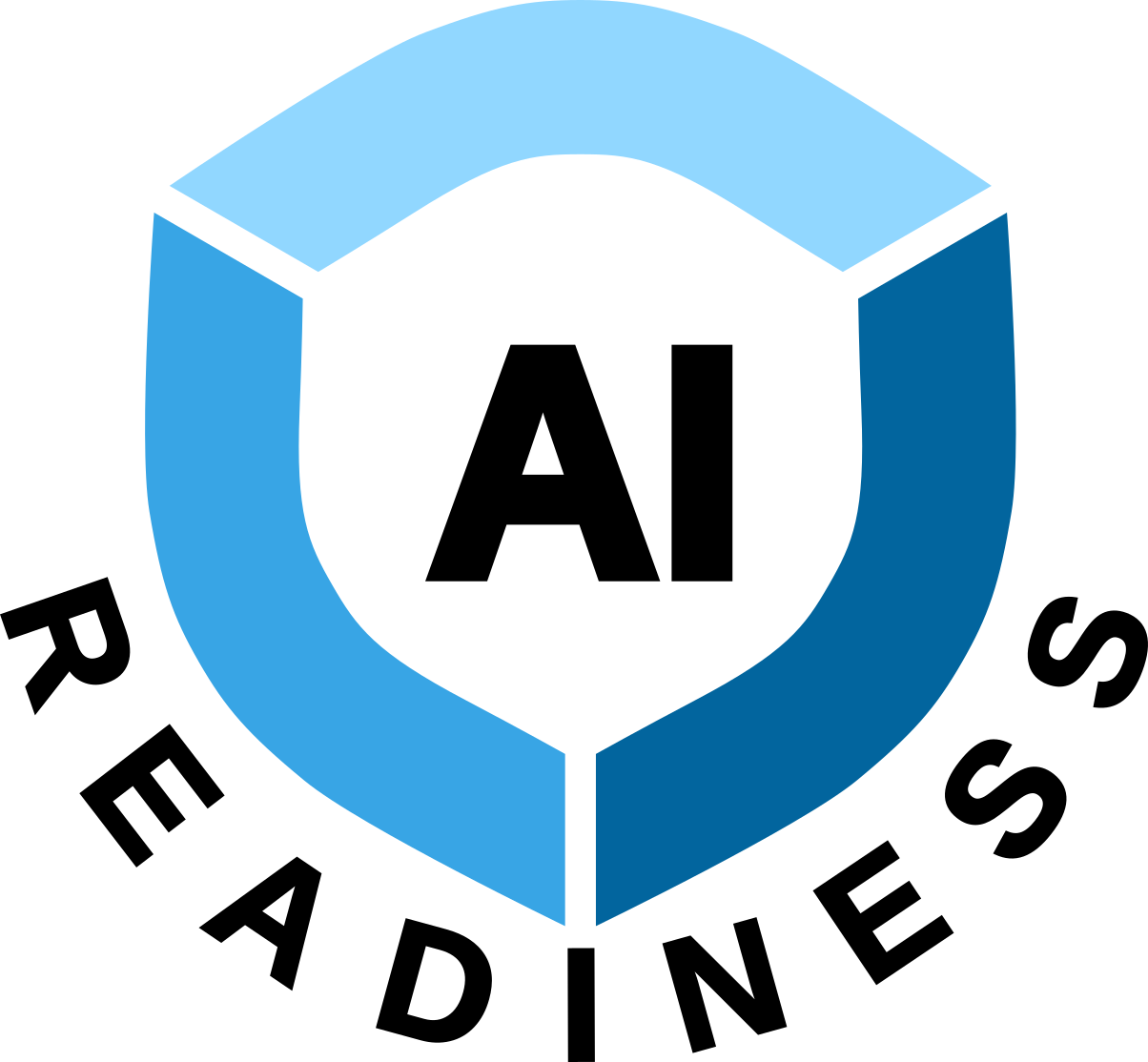
Will AI take your job? - How Generative AI affects business.
Few technological advancements have garnered as much attention and excitement as Artificial Intelligence (AI). Generative systems like ChatGPT open up a new world of possibilities when it comes to doing business. Generative AI can create stunning visuals, produce lifelike voices, weave compelling narratives, and tackle complex problems. The scope is vast and continuously expanding.
Effectively navigating these uncharted waters requires a careful balance of visionary thinking and practical decision-making. To support leaders on this transformative journey, we identified emerging patterns which help to define actionable strategies and unlock the true value of generative AI within their organizations
A strategic view on generative AI's disruptive potential
Generative AI's transformative power has the potential to revolutionize industries and reshape the way we work. It has emerged as a force to be reckoned with, poised to become a commodity in the near future.
McKinsey estimates that the productivity gains enabled by Generative AI could contribute 2.6 to 4.4 trillion dollars to the global economy. A study co-authored by OpenAI, the organization behind ChatGPT, suggests that large language models (LLMs) have the potential to expedite approximately 15% of the tasks performed by the American workforce. In addition, Goldman Sachs predicts that this technology could partially impact two-thirds of all jobs in the United States.
This sounds exciting and scaring at the same time with job displacements being a possible scenario. However, the prevailing believe is that Generative AI will serve as an enabler, enhancing human capabilities rather than replacing them. It will complement human workers, allowing them to focus on higher-value tasks while automating routine or repetitive aspects of their work. This projection aligns with the historical pattern of technological advancements augmenting human capabilities, rather than rendering them obsolete.
While the short- to medium-term impacts of Generative AI are expected to be significant, adoption time frames are projected to be faster compared to previous transformative technologies such as the internet. Nonetheless, the rapid integration of Generative AI raises legal and ethical questions that demand careful consideration. Concerns surrounding liability and copyright infringement are particularly pronounced in highly-paid white-collar occupations and industries like education, medicine, and professional services.
As Generative AI becomes more prevalent, it is crucial to establish clear frameworks and guidelines to address these concerns and ensure responsible and ethical usage.
The impact of Generative AI on the workforce
The rise of Generative AI has compelled organizations across the board to reevaluate their processes and consider the best strategies for adopting this groundbreaking technology.
While it is unlikely to replace jobs outright, it will significantly enhance and streamline the work of those who possess the necessary skills to utilize it effectively. As particularly knowledge-based occupations with higher wages and educational requirements are affected, individuals with lower skill levels stand to gain the most from this technology.
According to a recent study by Jasper, the leading companies in terms of investment in generative AI technology are also the largest ones. Professionals are utilizing generative AI tools on a regular basis, with most users employing them a few times a week or a few times a month. The majority of AI users are spending an average of $200-500 per month on generative AI tools.
The applications of generative AI in the workplace are diverse. Professionals find these tools useful for tasks such as creative writing, blog posts, email marketing, and idea generation. They have proven effective in tasks like ad copy creation, brainstorming, and email marketing campaigns.
While generative AI offers several advantages, there are barriers preventing its widespread adoption. Quality concerns, skepticism, and budget constraints are the primary factors deterring non-users from embracing generative AI. Nonetheless, the overall satisfaction among users is high, with approximately 90% expressing satisfaction with the tools.
Certain trends in generative AI adoption can be observed based on the study. Millennials and Gen Z are the leading users of generative AI tools, followed by professionals in the age group of 35-44. Directors, c-suite professionals, and solo entrepreneurs are among the most frequent users, utilizing generative AI tools daily.
Looking ahead, the majority of respondents believe that generative AI models will continue to improve in both quality and utility. Professionals can expect ongoing advancements in generative AI technology, further enhancing its potential to augment and optimize various aspects of their work.
In conclusion, while generative AI is not poised to replace jobs, its impact on the workplace is notable. By leveraging generative AI tools, professionals can enhance their content creation abilities, streamline marketing efforts, and improve idea generation. As this technology continues to evolve, it holds the potential to reshape work processes and contribute to increased productivity in diverse industries.
In any case it is important to exercise caution and avoid blindly following hallucinations or unfounded assumptions generated by the AI system.

Examples of affected jobs and industries
Jobs relying on writing or coding are strongly exposed to the benefits of LLMs and LLM-based automation tends to mainly affect jobs which require higher levels of education. Particularly in areas such as marketing and customer support. Here, Generative AI will personalize content and product recommendations and LLM powered chatbots finally provide the functionality which we were promised in the past.
In the financial industry, we can expect a significant shift towards personalized investment recommendations that make use of near real-time market data. This emerging trend is poised to become the new standard, revolutionizing the way individuals receive investment advice tailored to their specific needs and goals.
In the field of research, particularly in areas like biopharmaceuticals, generative AI is poised to make a substantial impact by accelerating the research and development (R&D) process. AI algorithm have the potential to suggest promising molecules, significantly reducing the time and resources required for discovering new drugs and treatments.
Generative AI algorithms have shown remarkable potential in streamlining the migration process of outdated code bases. By automating parts of the migration process, generative AI can significantly reduce the time, effort, and potential errors associated with code base modernization.
In summary, generative AI technology holds great potential for various industries and can revolutionize the way we work and solve complex problems. While some tasks may be automated, it also presents new opportunities for businesses to personalize experiences, optimize processes, and drive innovation.
How leaders stay ahead of the curve
When it comes to harnessing the power of generative AI, as business leaders you can take a few key steps to maximize its potential within your organization. By curating your use cases, educating your workforce, and driving integration, you can pave the way for a successful adoption of this technology.
When curating AI use cases within an organization, it is crucial to start by thoroughly understanding the specific pain points and challenges the business faces, and then identify areas where AI can provide valuable solutions. By conducting comprehensive research, collaborating with cross-functional teams, and continuously iterating and refining the selected AI use cases, organizations can maximize the positive impact of AI on their business operations.
When thinking on how to educate the workforce, start by organizing informative workshops or training sessions that provide a clear understanding of generative AI's potential and its practical applications in various business domains, encouraging an exploratory mindset while emphasizing the ethical considerations associated with its use.
Considering the rapid pace at which the technology is advancing, the time to start fostering internal innovation is now. Companies that fail to embrace the disruptive power of generative AI may find themselves at a significant cost and innovation disadvantage that could be difficult to overcome.
Regarding integration of AI-solutions, one of the most significant advantages lies in running your own models or fine-tuning existing ones. This empowers you to tailor the AI systems specifically to your business needs, enabling more accurate and relevant outcomes. Additionally, taking ownership of the models ensures better control over data privacy and regulatory compliance, which is crucial in today's landscape.
Summary
While concerns about the impact of automation persist, it is important to note that historical evidence suggests that new roles will emerge alongside technology, fulfilling new needs and creating opportunities for growth. Nevertheless, it is wise for businesses to carefully consider the potential impact of generative AI and individuals to invest in skills that are less susceptible to automation.
By following these guidelines and proactively embracing generative AI, you position your organization to thrive in the digital age. The potential benefits of this technology are immense, and by staying informed and taking decisive action, you can lead your business into a future of innovation and success.


